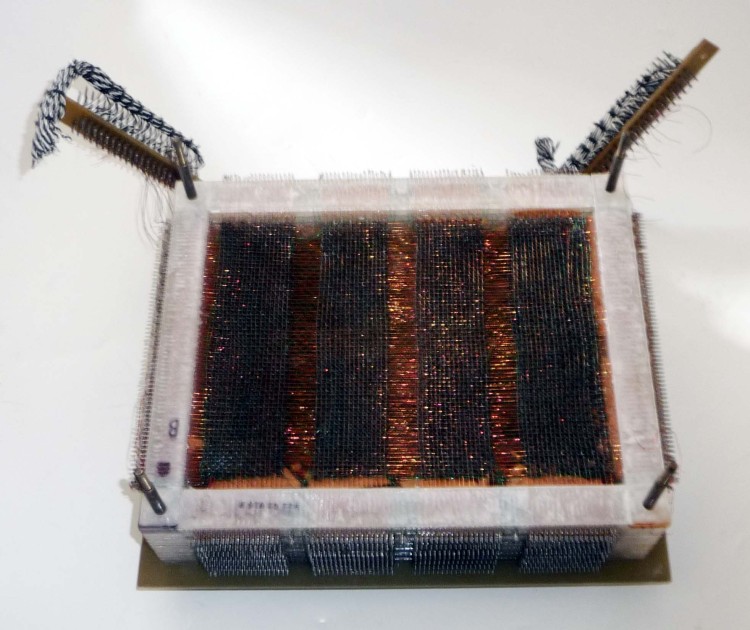Core Memory (9)
| Home > Browse Our Collection > Peripherals > Core Memory > Core Memory (9) |
|
Magnetic-core memory was the predominant form of random-access computer memory for 20 years (circa 1955-75). It uses tiny magnetic toroids (rings), the cores, through which wires are threaded to write and read information. Each core represents one bit of information. The cores can be magnetized in two different ways (clockwise or counter-clockwise) and the bit stored in a core is zero or one depending on that core's magnetization direction. The wires are arranged to allow an individual core to be set to either a "one" or a "zero", and for its magnetization to be changed, by sending appropriate current pulses through selected wires. The process of reading the core causes the core to be reset to a "zero", thus erasing it. This is called destructive readout. Such memory is often just called core memory, or, informally, core.
The attached photograph shows a very early core memory stack of 7 plates measuring approximately 8 inches & 11 inches.
Ref: 337 MTB-10 43C108933G1
Panel No: 922 G2016F Any further information on this unit would be appreciated. Please email collection@computinghistory.org.uk
Date : 1965This exhibit has a reference ID of CH18709. Please quote this reference ID in any communication with the Centre for Computing History. |
|










